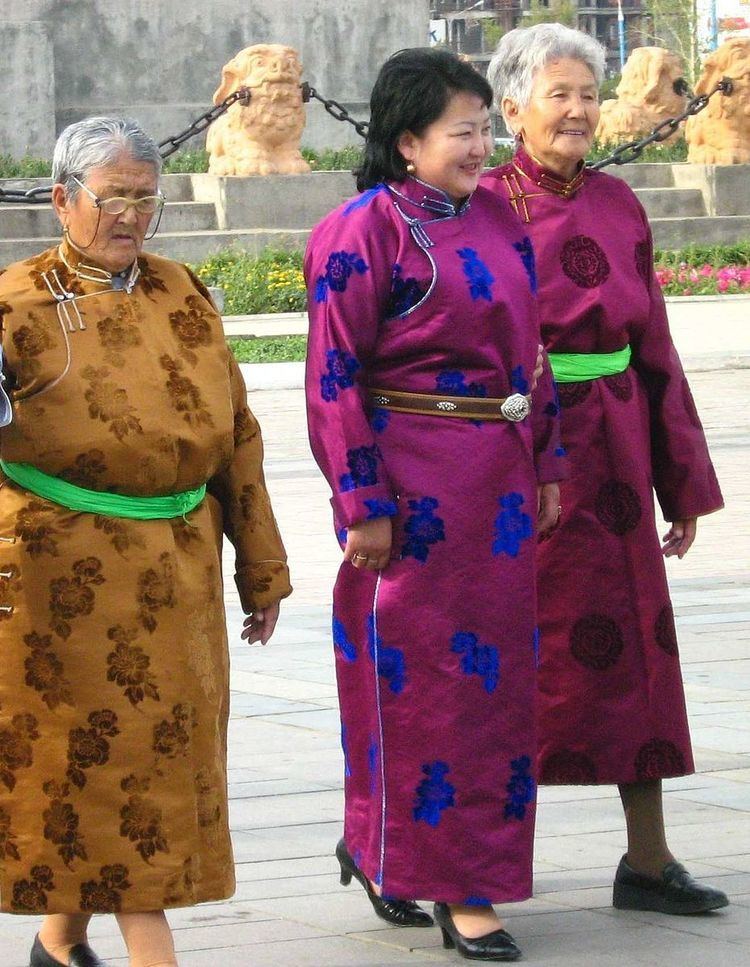Value 0.328 (2012) Maternal mortality (per 100,000) 63 (2010) Females over 25 with secondary education 83.0% (2010) | Rank 44th Women in parliament 12.7% (2012) Women in labour force 54.3% (2011) | |
 | ||
Mongolian women had a higher social status than women in many other Asian societies, but were considered unable to herd cattle and possibly not horses. Only one woman, Toregene, became supreme ruler in between maturity of the elected chosen Khan following Genghis Khan's introduction of heredity possibly claimed by the Tatars he was last with, and four Khatuns shared governorship and regional powers with Khublai Khan.
Many were herdswomen and mothers, but during the Middle Ages, some were women horse-archers and swordswomen, and Hun descendant sawkele impassioned women fighters were accepted but the Yassa while not prohibiting recommends them to commerce probably of their dairy produce or means them to kill rather than fight or as members of the Khuriltai, a Mongol governmental council.
Genghis Khan's daughters were made army combat generals by him, including Altanqalan who made her husband separate from all his female friends respectively divorce all his wives. Some women were Mongol city commanders and khatuns and bekis in war for the rank of command in battle this gave, but khatuns were married to prolong the race.
